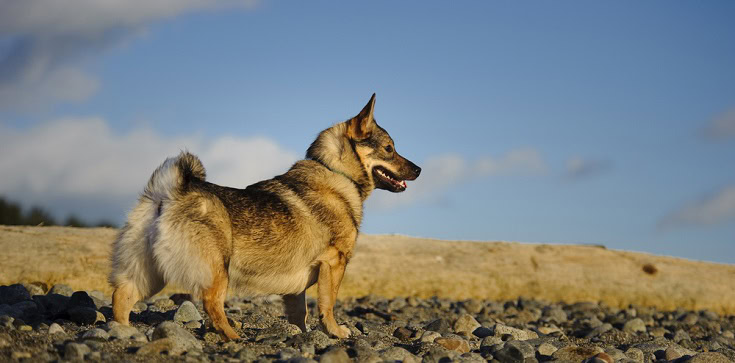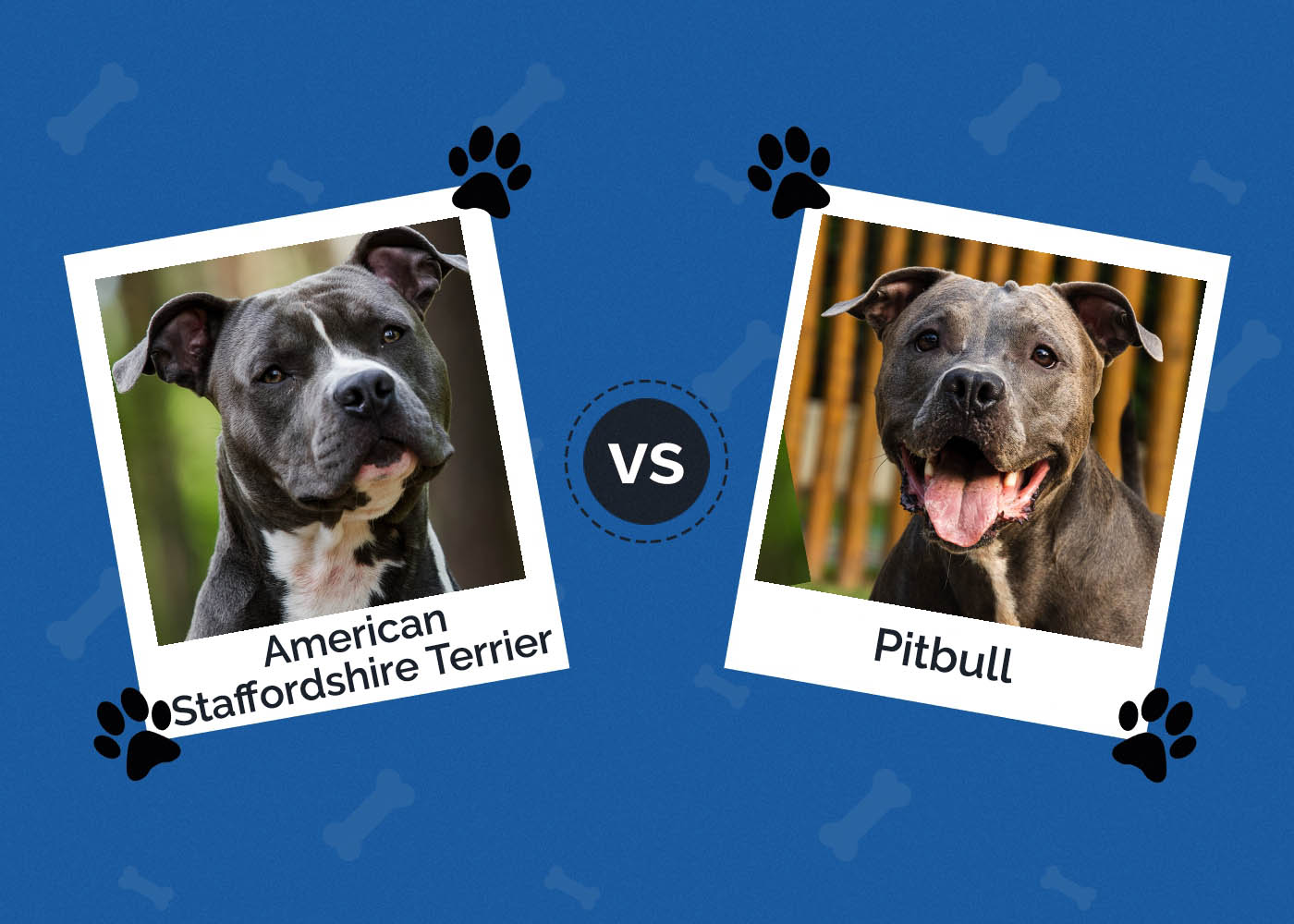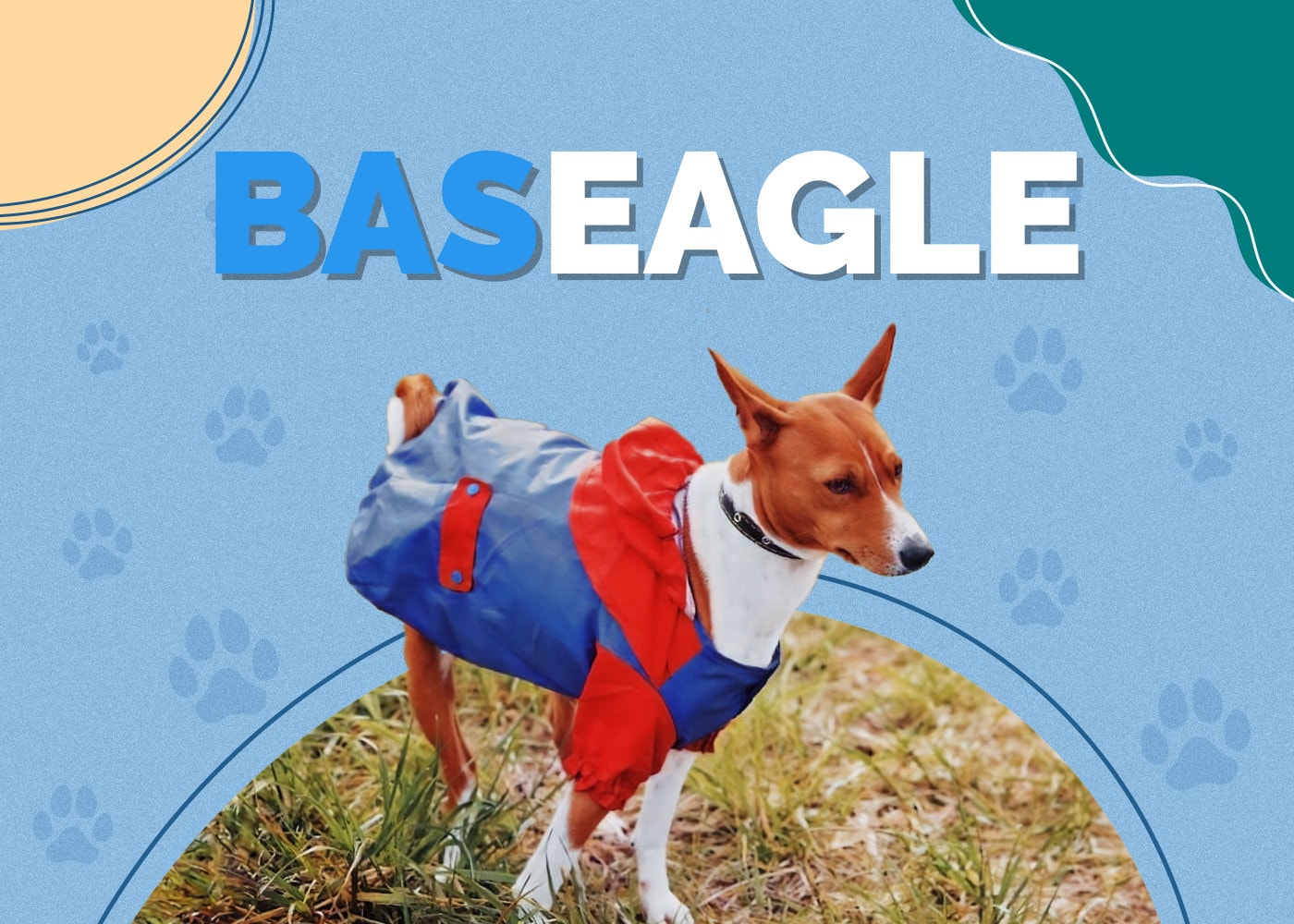Mastiff Bloodhound Mix: Pictures, Care Guide, Temperament & Traits
Updated on
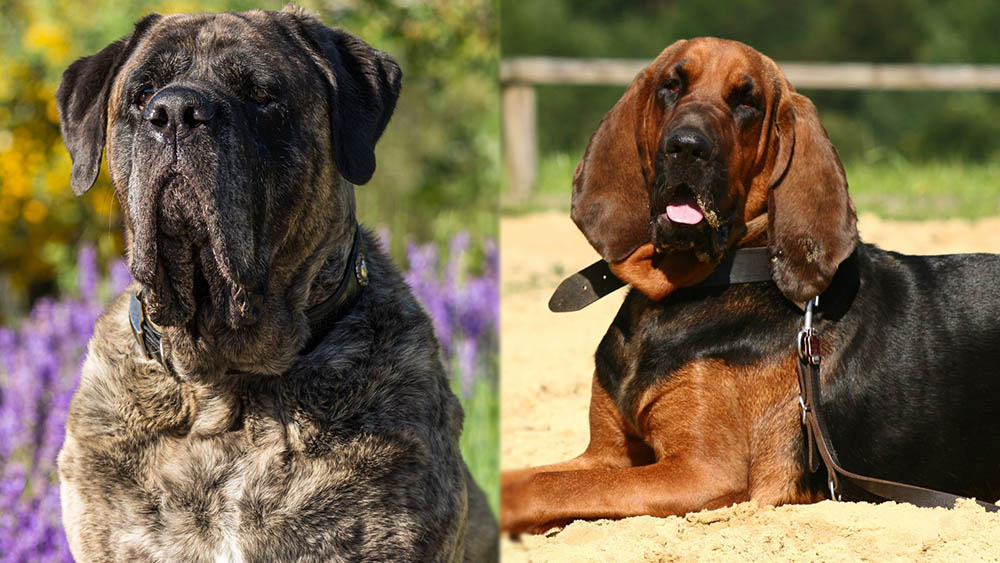
Click to Skip Ahead
Purebreds tend to get a lot of attention, but there are tons of mixed big dogs out there that deserve some love too, like the big, rugged Bloodhound Mastiff. They look like a canine pro wrestler but have a keen sense of smell and sharp intelligence that makes them a wonderful fit for families. However, they may have a stubborn streak! For some more detailed information on this underrated breed, let’s check out some more details about the Mastiff Bloodhound mix down below.
| Height: | 23–27 inches |
| Weight: | 120–200 pounds |
| Lifespan: | 8–12 years |
| Colors: | Black, tan, liver, red, white, brindle |
| Suitable for: | Families with older children, people seeking a guard or watchdog breed |
| Temperament: | Gentle, loving, loyal, watchful, even-tempered |
The Mastiff Bloodhound mix comes from two gentle giants: the English Mastiff and the Bloodhound. Though mixes have notoriously varied traits, it’s a safe bet that their offspring will inherit much of the Mastiff’s huge size as well as the Bloodhound’s sharp nose, which made them so valuable for hunting. Every dog is unique, however, and their parents’ genetics and appearance will affect how their appearance and temperament develop from birth and puppyhood onward.
Mastiff Bloodhound Mix Characteristics
Mastiff Bloodhound Mix Breed Puppies
Because they’re a mix, you’ll have the best luck finding a Mastiff Bloodhound mix from accidental litters or possibly in shelters or rescue/shelter organizations. Breeders generally don’t deal with mixes and are good about preventing mixed litters, so that option’s out. The silver lining to all this is that you probably won’t have to pay as much for a mixed puppy, saving on upfront costs.
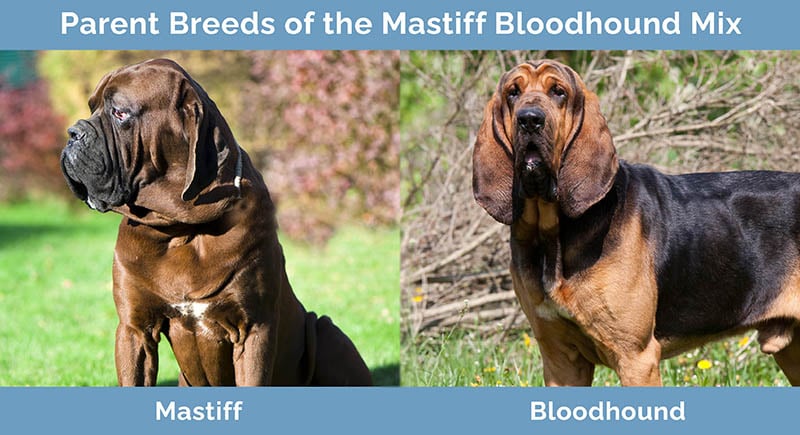
Temperament & Intelligence of the Mastiff Bloodhound Mix
These dogs tend to be affectionate and even-tempered, making them pretty good family pets. They’re very loving, although you have to be prepared to train them properly because of their stubbornness. Keep reading to learn a bit more about whether they’ll fit into your family.
Are These Dogs Good for Families? 👪
Yes, but with some caveats. The Mastiff Bloodhound mix tends to be shy, loving, and devoted to their families, and they’re remarkably tolerant of children of all ages. Their size, though, makes them less than ideal for young children who they might accidentally push around. They’ll require supervision and lots of training initially to establish boundaries within your home and how to safely interact with your kids.
They may have a stubborn streak when training, so we’d recommend an experienced dog owner who won’t let them run circles around you with their surprisingly sharp wit and charming sense of humor. As long as you know that these are big dogs and you are prepared to handle it, we think you’ll do fine. A final suggestion: invest in a sturdy harness and leash!
Does This Breed Get Along With Other Pets?
Mastiff Bloodhound mixes usually get along with other pets well, and they’re not especially hyper dogs that’ll chase your cat all over the house. They do best with other dogs but will tolerate cats if they’re raised around them or get ample socialization. With all that said, every dog has its own unique character. Some are more aggressive towards other pets, or they might be especially mild pups.
Things to Know When Owning a Mastiff Bloodhound Mix:
Food & Diet Requirements 🦴
The Mastiff is considered the largest dog breed in the world, and Bloodhounds are pretty hefty themselves, so their mixed offspring will be some of the most voracious eaters of all canines. Three to four meals per day is recommended when they’re puppies to not overwhelm their growing digestive tracts. Once they reach their full size at a year or 14 months, they’ll be eating 6 to 10 cups of dry food per day!
Exercise 🐕
Mastiff Bloodhound mixes are active, athletic dogs that need 1 to 2 hours of exercise every day. Their Bloodhound side is more active than the Mastiff, so pups that take after the hunting hound’s side will probably be more active as well.
We highly recommend having a nice secure yard of your own to help them burn off energy as needed throughout the day, but several vigorous walks throughout the day can do the same job if a yard isn’t feasible. Keeping their exercise needs met will keep your Mastiff Bloodhound from excavating your yard when they’re bored or chewing up your shoes. Toys are invaluable for keeping their attention during laidback periods, and you can integrate them into much of your training too.
Training 🎾
Mastiff Bloodhound mixes will need a lot of early leash training to keep them from tugging on the leash, and it all boils down to ignoring bad behavior and rewarding calm behavior. That carries over to all types of obedience, from tricks to hunting. Socialization is key with Mastiff Bloodhound mixes and can help temper their innate aloofness toward strangers, plus is necessary to help them coexist peacefully with other pets in your home.
Despite their imposing bulk, Mastiff Bloodhound mixes are very sensitive, emotional dogs that do very poorly with punishment. Instead, always strive to only use positive reinforcement to incentivize good behaviors and ignore bad behaviors. While the techniques may vary, that’s a good foundation for all training with this breed.
Grooming ✂️
Both Mastiffs and Bloodhounds have low-maintenance coats, so don’t expect too much time grooming them. That said, dogs with lots of skin folds will need to be wiped down with a clean cloth every so often to prevent bacteria growth and infections. Expect lots of slobber too, as both sides of the family tree tend to drool all over the place. A doggy bib might be just the thing to keep it contained.
Health & Conditions 🏥
Larger dogs like the Mastiff Bloodhound mix invariably have shorter lifespans than smaller dogs, hovering between 8 to 12 years at maximum. In addition, they may develop an array of minor or serious health conditions from either the Mastiff or Bloodhound side. Check out some of the potential health conditions you may need to wrestle with later in your dog’s life down below.
- Ear infections: Bloodhounds with long ears are prone to inner ear infections, AKA otitis interna.
- Eyelid issues: This includes eyelid deformities and the scary but easily fixed “cherry eye” that plagues both Mastiffs and Bloodhounds.
- Skin conditions: Skin infections are most problematic when a dog has a lot of prominent skin folds, especially around the face.
- Bloat: AKA GDV, bloat is a potentially fatal medical emergency common in big dogs where their stomach fills with gas and/or fluid and twists.
- Eye conditions: Both Bloodhounds and Mastiffs may be afflicted by a variety of eye diseases that can cause blindness, including cataracts, retinal atrophy, and more.
- Heart problems: This encompasses several conditions like degenerative mitral valve disease, congenital heart defects, and heart disease.
Male vs Female
Males tend to be more boisterous, rowdy, or energetic, while females are typically more chill, laidback pups. Another big difference is that males are almost always larger than females, which affects your food costs to some extent. However, bear in mind that the personality of a dog depends more on genetics than gender, and some females can be more spirited while some males are more mellow.
3 Little-Known Facts About the Mastiff Bloodhound Mix
1. Bloodhounds Are the Best Trackers
Bloodhounds are thought to have more scent receptors than any other dog breed, which made them natural trackers for missing people. Their offspring can inherit this astonishing sniffing power too, but it depends on the dog’s genetics.
2. Mastiffs Are Roman
Mastiffs are directly related to the ancient Roman Molossers used as war dogs, and there are many surviving depictions of the Molosser and Mastiff throughout their histories. Today’s Mastiffs and their puppies have a lot in common with the Molosser but with heavy breeding from other regions later on in history.
3. They’re a Born Guard Dog
While Bloodhounds usually make unreliable guard dogs, the addition of Mastiff blood makes their mixed puppies natural guard dogs. They’re intensely loyal to their family, but less so toward strangers they don’t know. With that said, every dog is different. Some dogs turn out less protective and more independent than others.
Final Thoughts
Mastiff Bloodhound mixes are an uncommon mix between two loyal, independent hunting breeds, and they can inherit a wide range of both physical and personality traits from both parents. Even within the same litter, you could see puppies that take after the Mastiff parent while another obviously resembles a Bloodhound more closely. However, if you’re looking for a big dog with lots of love to give, this could be the one for you.
See Also:
- Beagle Bloodhound Mix: Pictures, Care Guide, Temperament & Traits
- Bloodhound Poodle Mix: Pictures, Care Guide, Temperament & Traits
Featured Image Credit: (L) Joseph Gruber, Shutterstock | (R) Sabine Hagedorn, Shutterstock



